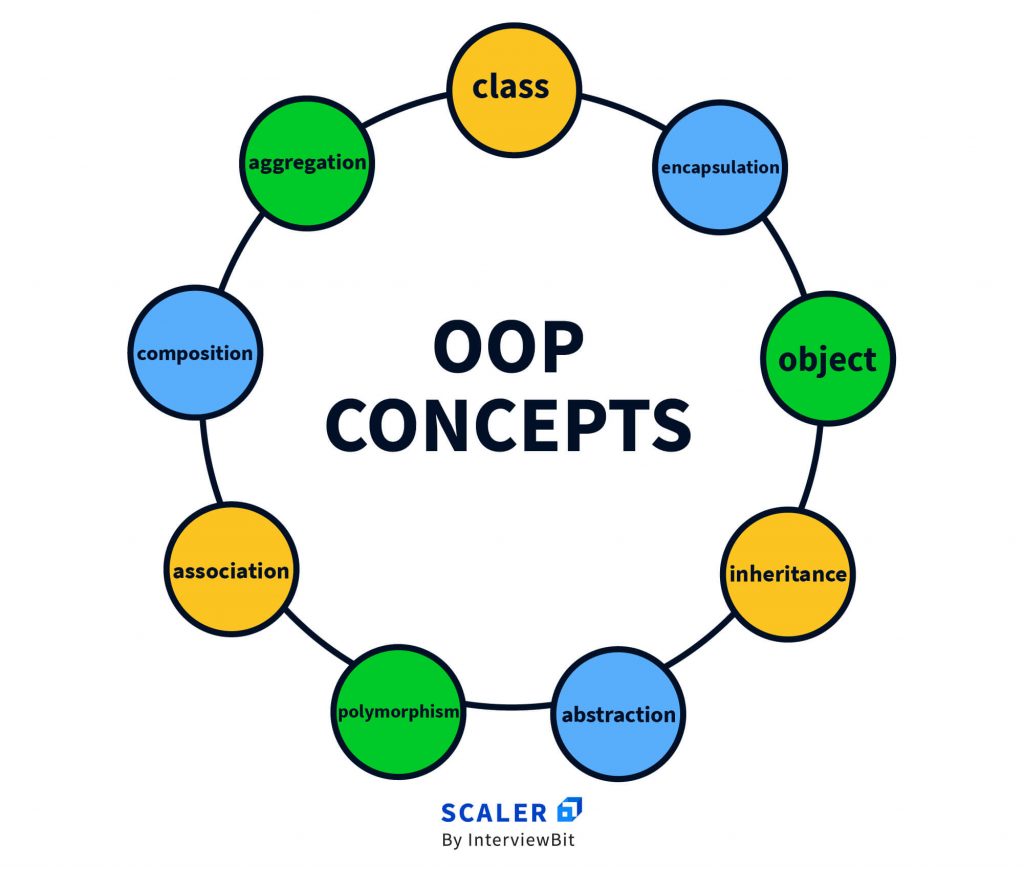Object-oriented programming (OOP)Object-oriented programming (OOP) is a programming paradigm that organizes code into objects, which are instances of classes. Here are some key concepts and principles related to object-oriented programming:
Classes and Objects: In OOP, a class is a blueprint or template that defines the properties (attributes) and behaviors (methods) of objects. Objects are instances of classes that represent specific entities or concepts.
Encapsulation: Encapsulation refers to the bundling of data (attributes) and methods (behavior) within a class. It helps in hiding the internal implementation details of an object and provides controlled access to the object's properties through methods.
Inheritance: Inheritance allows the creation of new classes based on existing classes. The new class, called a subclass or derived class, inherits the properties and behaviors of the existing class, called a superclass or base class. Inheritance promotes code reuse and supports the "is-a" relationship.
Polymorphism: Polymorphism enables objects of different classes to be treated as instances of a common superclass. It allows methods to be overridden in subclasses, providing different implementations while maintaining a consistent interface. Polymorphism promotes code flexibility and extensibility.
Abstraction: Abstraction focuses on representing essential features of an object while hiding unnecessary details. It allows you to create abstract classes and interfaces that define common behaviors and properties without providing specific implementation.
Modularity: Modularity promotes the organization of code into separate, independent modules or classes. Each module/class focuses on a specific functionality, making code more maintainable, reusable, and easier to understand.
Message Passing: In OOP, objects communicate with each other by sending messages. A message represents a request for a specific operation to be performed on the receiving object. The object determines how to respond to the message based on its class and implementation.
Association and Composition: Association represents relationships between objects, where one object is related to another. Composition is a strong form of association, where one object is composed of one or more other objects. These relationships help model real-world scenarios and dependencies between objects.
By utilizing these concepts and principles, object-oriented programming provides a modular, flexible, and reusable approach to software development. It promotes code organization, maintainability, and the creation of scalable and extensible applications.



